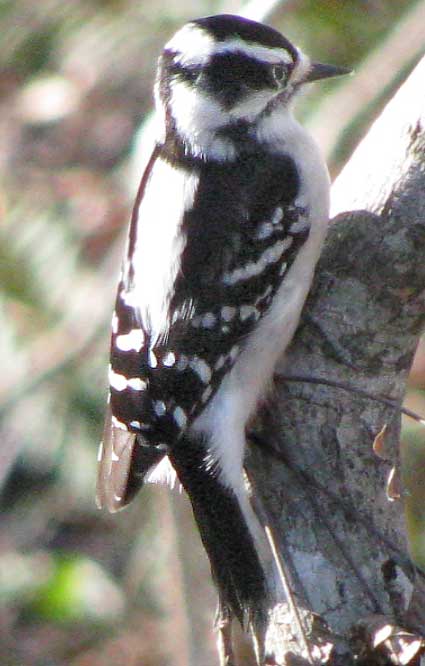Excerpts from Jim Conrad's
Naturalist Newsletter
from the February 9, 2009 Newsletter, issued from the forest near Natchez, Mississippi; elevation ~400ft (120m), ~N31.47°, ~W91.29°:
BEING CURIOUS
As I hiked through the woods noisily crunching dry leaves I heard a sharp PIK! then a little black and white woodpecker glided onto a young tree's trunk not 15 feet away. Usually birds scatter during such walks but this one clearly didn't mind being seen close up and even seemed a little curious about me. Who knows what was on that bird's mind? Whatever the deal was, I managed to get a decent picture, which you can see below:

Throughout most of forested North America birders would instantly know that this is either the Downy or the Hairy Woodpeckers. The two closely related species are very similar, differing most conspicuously in size and relative lengths of bill, but these features can be hard to diagnose in the field.
If the size of what I'm seeing isn't clear, usually a good feature is that the Downy's white outer tail feathers bear conspicuous black spots while the Hairy's doesn't. Well, I was pretty certain that the bird I photographed was small enough to be a Downy, but you can see that those black spots on the outer tail feathers were missing. Still, spots or not, I'm calling what I photographed is an adult female Downy, PICOIDES PUBESCENS. Interestingly, birds in eastern North America bear white spots on the upper wing area while western birds just have spots on the lower wing.
Cornell University provides a whole, well illustrated page helping us distinguish Downys from Hairys, here